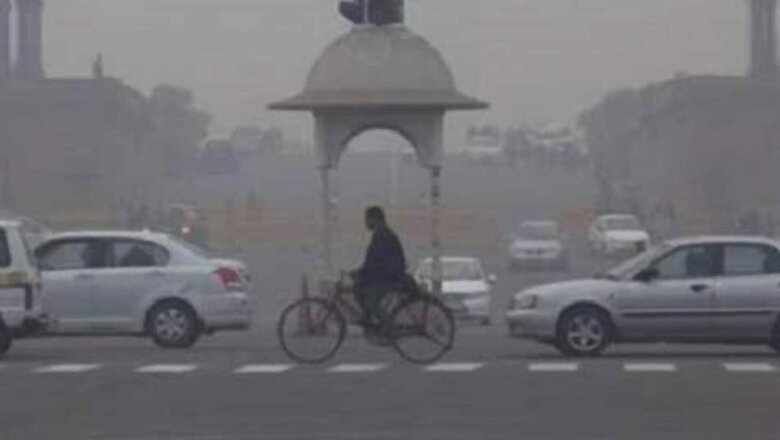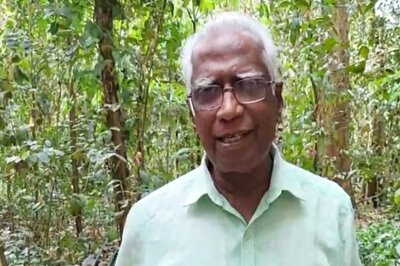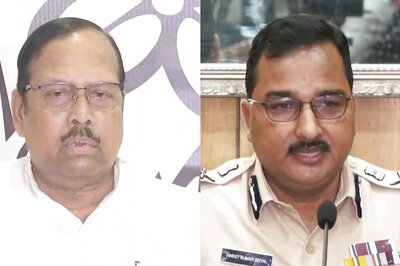
views
People in Delhi and nearby regions are having their annual tryst with the deadly winter air pollution, a phenomenon where toxic clouds of smog engulf this region every year around the winter months. Contributing to nearly 30% of winter air pollution in Delhi, stubble burning across the nearby states of Punjab, Haryana, and Uttar Pradesh is attributed as one of the major factors for the existence and amplification of air pollution in the region during the winter period.
Following a similar pattern as the last five-odd years, NASA recently spotted agricultural fires over the Indian states of Punjab and Haryana through its Visible Infrared Imaging Radiometer Suite (VIIRS) satellite imagery.
Other than the continuous occurrence of the event of stubble burning and subsequent air pollution, there are several other insightful developments which repeat themselves every year around the same time. One of them is that the judiciary and executive arms of the government get into action mode.
Recently, as in previous years, Supreme Court took cognisance of the issue and has been providing statements and directions with respect to the menace of air pollution and stubble burning. In fact, since 2016, Supreme Court and the National Green Tribunal has been issuing judgments related to stubble burning and even use of firecrackers during Diwali in Delhi. The various state governments get into a bantering battle, blatantly violating the spirit of cooperative federalism and displaying a rather protectionist and narrowed stance of blaming an entire state for the challenge faced by one state. Then there are self-proclaimed “game-changing” measures by various governments including smog towers, odd-even policies, lockdown of schools, construction activities, and other day-to-day activities.
The state governments of Punjab and Haryana have also banned the practice, imposed penalties, and also invoked the Section 144 of CrPC for arresting and putting farmers behind the bars as well. There are national and state-level subsidy programmes for providing happy seeders at subsidised prices to farmers and farmer groups.
Experts, from various walks of life, pour in their suggestions to deal with the crisis at hand. Media columns are filled with articles around the issue. Think tanks and research organisations churn out reports signalling the relevant authorities to undertake effective measures immediately.
Yet, every year, the state seems helpless and weak in front of the farmers who end up resorting to stubble burning. Ironically, the reason farmers suggest they do so is because they feel helpless in the wake of pressure of farming the new rabi crop in time and their lack of trust on government schemes and subsidies.
A Regulatory Problem
In the backdrop of all these developments, there is a critical regulatory problem that is often overlooked. A regulatory problem can be defined as one which requires a regulatory solution; a solution that involves regulating people’s behaviour. The core regulatory problem concerning winter air pollution caused because of stubble burning in neighbouring states of NCR region is of the behavioural stubbornness of stakeholders involved. Farmers, despite knowing the negative environmental and health consequences of their actions, continue this practice. State and law enforcement agencies, despite proven inability of their conventional approach to deal with the challenge, continue sticking with the same approach. Other than these two major stakeholders, the repetition in behavior of society and its perception of the problem is another worrying development.
The science of regulatory governance argues for a sequential process to be followed in dealing with regulatory problems.
The first step is clearly articulating the regulatory problem effectively. One of the key attributes of a clearly articulated regulatory problem is that it should be measurable and controllable. This implies that by regulating the behaviour causing the problem in the first place, one can expect to measure the degree to which the problem will be solved. For instance, if the behavior of deliberately burning stubble by farmers is the regulatory problem, then there should be credible evidence suggesting that stopping of this behavior would result in envisaged outcomes.
The next, and perhaps the most critical step, is of comprehensively exploring the regulatory problem to be addressed. This implies adopting a holistic lens to map all the potential causes of the problem under discussion. In the case of stubble burning resulting in winter air pollution, there are several layers of causal analysis which is required. Firstly, there is a need to acknowledge that winter air pollution has various other factors responsible for it, other than just stubble burning. There are anthropogenic factors exacerbating level of pollutants in the atmosphere, like vehicular emissions, industrial pollutants, waste pollution, and others. On top of it, there are natural meteorological factors like slow wind speed and low precipitation which traps these pollutants and enhances the magnitude of the problem. This acknowledgement is critical in determining the extent to which a pollution crisis can be mitigated and the importance of adaptation measures required to deal with the uncontrollable portion of the problem.
This step also highlights the need to adopt a systems-thinking approach while exploring the problem at hand. The way to go about it is to go deeper into the causes, and not just remain at the surface-level factors. For instance, there are developments pertaining to agricultural sector which catalyses the challenge of burning of stubble. Given the huge export potential of rice, farmers are eager to enhance its production. Furthermore, with increased pressure on the northern belt for multiple crop cycles in a year, especially after the green revolution, farmers are left with very little time between harvesting of rice crop and sowing for the next cycle. The inability of state sponsored solutions to reach the target beneficiaries is another factor that enables continuance of the practice of stubble burning. In 2018, the Prime Minister set up a fund for providing happy seeders at discounted prices to the farmers and farmer groups. However, practical challenges remained and the intended outcomes have not been achieved. The fund has accumulated an amount of over US $300 million over a period of four years; however, the machinery of clearing the stubble is still beyond the reach of the farmers. While it subsidises happy seeder machines, it does not cover tractors and trolleys which are costlier than the happy seeders and are indispensable for effectively clearing the stubble from the paddy fields.
Furthermore, the farmers are required to pay upfront and then avail subsidy in the future, which is a difficult proposition for many farmers which face a continuous threat of cash-crunch and liquidity issues. Similarly, there are other issues that render the existing solutions ineffective and contribute to amplifying the crisis of stubble burning and subsequent air pollution in the region.
The next step in regulatory algorithm is of enumerating an exhaustive list of solutions that can help tackle the exhaustive list of causes identified in the previous steps.
These could be technological interventions, better channelising of funds and subsidies, structural interventions, policy-based recommendations, transactional instruments, and economic tools of intervention, amongst others. For instance, for the challenge of stubble burning, potential solutions might include dedicated information campaigns, providing discounted equipment and technology, investments in research, development and extension services, providing a platform to farmers and state to openly discuss their concerns and rectify leakages in financial incentives and other policies, amongst others.
Once the exhaustive list is compiled, the next step is to evaluate through rigorous introspection, scrutiny, and in-depth inquiry into the quantifiable and qualitative costs and benefits of all the solutions. The costs, for instance, could either be the cost of equipment and machinery, or the administrative costs of any policy-based intervention. Finally, after such an extensive review of all the possible costs and benefits of such solutions, an optimal mix of regulatory interventions needs to be carved out keeping in mind the local conditions under which such a mix has to be implemented. This implies accounting for local state capacities, weather conditions, demography, socio-economic realities, amongst others, which have a significant impact on the efficacy of the proposed solution.
Thus, to achieve credible success in dealing with the challenge of winter pollution resulting from stubble burning, shortcuts have to be avoided and tough decisions are the need of the hour. And obviously, tough decisions require rigorous backend assessment. The science of regulatory governance provides an apt framework for this. This, coupled with the art of political decision-making, can be an effective recipe for addressing the issue of stubble burning comprehensively and effectively.
The article was first published in ORF
The writer is an independent public policy consultant working on issues around sustainability. The views expressed in this article are those of the author and do not represent the stand of this publication.
Read all the Latest Opinions here



















Comments
0 comment